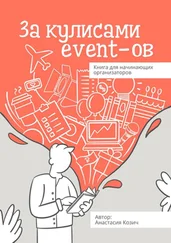Breathable air filled the domes. Within each, an interconnecting city could be sealed by unit if the dome were compromised. The city was comprised of manufacturing facilities, warehouses, ore mills, greenhouses, water and air conversion facilities, and living and recreational facilities. Intermediate connector tunnels allowed for the ingress and egress of workers and drones with individual power packs, as well as docks for passenger shuttles. Working and living quarters were centrally located for ease of disbursement to the workstations.
Schiflet ignored his office and proceeded to the doors of the cylindrical corridor dubbed the “sterilization tube,” where hazmat suits hung on a rack. Wagner could sanitize and meet him here.
Through the transparent walls he could see three forms moving among long bench tables laden with chemical and biological container trees, microscopes, test tubes, petri dishes, vibration and mixing equipment, and computers. Opposite the tables were stacks of cages of mice.
The faces of Karen Wagner and her two assistants were visible through their clear helmets.
He could not recall that Wagner had ever communicated with him via mindtext. So, why now?
One of the assistants noticed him and tapped Wagner’s shoulder. She turned. Her hazmat suit showed little of the traditional yellow. There were many splotches of blue and red and pink flowers. He allowed her this small consideration. She was a workhorse, after all.
He motioned for her to come out. She motioned for him to come in. He tapped his wrist to show he was pressed for time. She waved him inside again.
He kicked off his shoes, entered the sterilization tube. No corners here. Much easier to sterilize. He double blinked on a holographic button. Behind him the door to the offices closed and a door opened to a closet of yellow hazardous-material suits.
He removed the coat, black tie, shirt, and pants and hung them carefully on the rack, then pulled the suit and boots from the hanger while standing in his white undershirt, red boxer shorts, and black socks. Modesty was not a consideration in his department—sterility was.
As it did so often of late, his mind wandered, even as he mechanically donned the suit. He’d lobbied for the next assignment almost weekly over the past six months. He was ready. More than ready. So far, in the lab research and oversight of SCONA’s Mars mission projects, the biological half of his astrobiology discipline had proven only marginally intriguing. A decade and a half of manned and unmanned exploration had revealed only the most basic form of life captured in rock on the red planet. At the time it was a much-heralded discovery— life exists on Mars! —but interest soon waned as more exciting discoveries failed to manifest.
People wanted aliens with intelligence, not strands of rock-dwelling carbon-based cells that barely qualified for the term “microbe.” Bacteria, fungi, viruses. These were revealed only with the aid of electron microscopes. Except to astrobiologists, these Martians were both dead and dull.
More life could be found in worm feces on Earth, where life had pushed into virtually every niche and ecosystem.
With his feet in the pliable boots of the hazard suit, he pulled the rest of it over his hips, then reached for the torso section and stood.
“Upright man!” he announced, to no one. “Nothing remotely close to a worm had a chance to evolve on Mars. So, in contemplation of Terran human evolution…”
He did not have time for distraction but drifted there anyway.
Mankind has the ability to manipulate mankind. What other species can consciously control its offspring?
Such power comes at a cost.
Despite godlike intrusions into genetic selection, Homo sapiens as a species was not flourishing. Populations were high due to reproduction, but life expectancies had dramatically decreased over the last two centuries. Every “favorable” genetic tweak seemed to lead to an offsetting and undesirable outcome. Perhaps this was Nature’s balance when the time factor was tampered with. Instead of having millions of years to prove or disprove genetic adaptations, humans have shrunken it to mere generations.
Evolution at record speed.
Turn on a switch here and risk that another switch turns off there. One not necessarily part of the plan.
Schiflet glanced at his hand and the vital opposable thumb as he secured the flexi-gloves over his thin-skin ones. Would complex aliens even have digits like this? They’d have to have some form of workable grasping appendage. Minds alone would not allow for the construction of dwellings and modes of transportation.
Unlike SCONA, NASA did not have the means for Mars settlements and the mining of asteroids, but it did have probes. Powered by nuclear fusion at a near-constant thrust, they raced toward “Goldilocks” planets in the closest solar systems. These were planets deemed most similar to Earth in basic climate; not too close and not too far from their resident suns. They were in the “just right” median area, just as the fabled Goldilocks preferred her porridge, unknowingly set out by the bears.
Schiflet exhaled through his nose in a deliberate snort. The bears probably had Goldilocks meat to thicken their porridge.
What had he been thinking of before that?
Probes?
Ah, yes, the NASA probes. Perhaps the images they sent back from the Earthlike planets would reveal signs of alien civilization. Even if the probes were shot down, at least it would prove that aliens had weapons, and were therefore intelligent.
Lines creased the corners of Schiflet’s mouth in a hint of a smile. Tough way to prove alien life: via provocation and violence. But then, very few species on Earth live in the absence of violence. Certainly there is no life without struggle. It was difficult to imagine alien life would be relieved of that burden.
His body now encased in the protective suit, gloves, and soft boots, Schiflet tapped the helmet against his thigh as he moved for the control pad of the lab door.
Another laser mesh appeared around him, even as the outline of a transparent text message icon smoldered red in his peripheral, then faded to a mere spot. A change in the direction of his gaze pinpointed it, followed by a single blink to open the text message. Schiflet fancied himself more in touch with his brain than most of the other people walking around with doctoral and medical degrees in this massive moon base of SCONA. He swore he could feel the impulses sent by the removable communication chip attached to an occipital implant at the back of his skull. In any event, the mostly transparent letters appeared before him.
Mindtext messages were stacking up, despite his discouraging them as a means of contacting him. He preferred less distraction, and old-fashioned email via computer served that purpose well enough. Still, other associates did not share his preference. One mindtext in particular caught his attention with its red exclamation mark.
Smith in finance, down on Earth, asking about funding for additional human engineering projects.
Schiflet’s eyes selected the reply and begin buttons. Then his channeled thoughts appeared above Smith’s original message.
We have funding. Our fellow Americans are still paying taxes, aren’t they?
Idiot.
He pursed his thin lips at the last bit. Reluctantly he focused on the backspace button until the derogatory term was erased. He didn’t need Smith to go whining to the operations and budget directors. His gaze found the send button.
Two blinks closed the text message editor. He could have verbally done it all, but everything was recorded in and around these buildings.
Red and green laser beams engulfed his head and shoulder region.
Читать дальше












